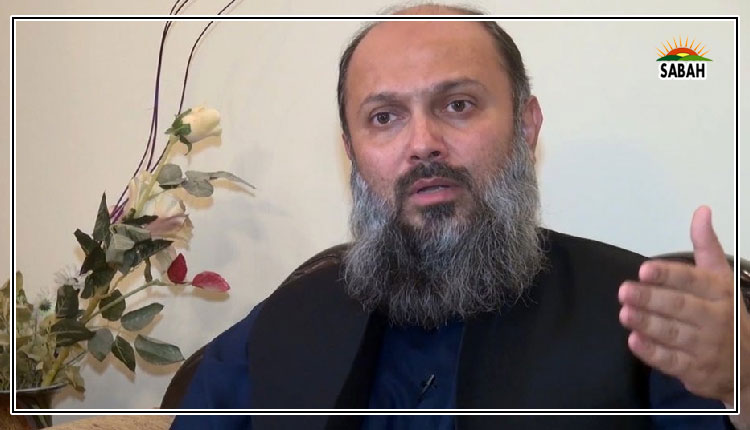A health emergency…Dr Huma Qureshi
Of the various types of hepatitis viruses, Hepatitis C is a major public health emergency, causing high disease and death globally. In the Eastern Mediterranean Region (EMR), 80 per cent of the disease burden was contributed by Egypt and Pakistan, according to the estimates released by the World Health Organization (WHO) a few years back.
Soon after, Egypt launched its presidential hepatitis control programme and cleared the disease through mass screening and treatment. Now Pakistan is a major contributor of the disease in this region and currently has the largest number of HCV-infected patients in the world. Like all other countries, Pakistan has to achieve the WHOs goal of hepatitis elimination from the globe by 2030.
In Pakistan, the main causes for Hepatitis C acquisition are improperly screened blood, improperly sterilized surgical/dental and delivery equipment, reuse of syringes and needles, and unhygienic tools used at barber shops. Hepatitis C can also be spread through sexual activity and intravenous drug users.
The virus is called a silent killer because once it enters the body, it will remain there for years without showing any symptoms. The disease is generally diagnosed when the signs and symptoms of ill-health appear, but, unfortunately, at this stage the disease progresses to an advanced stage of cirrhosis and liver cancer and therefore the treatment becomes difficult or impossible.
Each year 20,000 cases develop liver cancer and 20,000 die due to advanced liver diseases. Those who have the advanced disease are unable to perform their job/duties, leading to 25,000 years of disability with more than 300,000 years of life lost, culminating in a loss of $3.5 billion to Pakistans GDP.
The 2022 data from Pakistan shows that there are 10 million HCV-infected cases that have active virus, but most people do not know that they are infected. Within the provinces, Punjab and Sindh have 5.7 million and 1.9 million cases respectively. Currently, only 15 per cent of these cases have been treated. This tells that we need to diagnose 1.2 million people each year and treat them, and reduce new infections. Working on these numbers will result in preventing over 130,000 deaths and 100,000 new cases of liver cancer.
We have to find 10 million cases who are infected but are not yet aware of the disease, therefore all the adult population (over 18 years) should undergo a one-time rapid blood screening test. This test is done using a drop of blood from the finger prick and placing it over a rapid device. It takes 3-5 minutes to get the results. This test is available at most public and private hospitals and labs.
If the rapid test is negative, it means there is no infection and one should avoid the risk factors mentioned above. If it is positive, it means that there is exposure to the Hepatitis C virus, therefore one should go for further testing called the PCR test. This test is also available at large public- and private-sector hospitals and labs. The results of this test are usually available within a week.
If the PCR shows a detected virus, treatment has to be started with oral medicines which are given for 12 weeks (mild to moderate disease) or 24 weeks (advanced disease). The duration of the treatment is calculated using a set of cheap and simple blood tests.
Direct-acting antiviral (DAA) medicines are used globally to treat those who are infected. Fortunately, Pakistan is producing these generic medicines at a very affordable price (most cost-effective in the world), and these can cure 96-97 per cent of people with HCV infection within 12 weeks without any side effects.
Understanding the high HCV disease in Pakistan and the long-term benefits treating the population in the early phase of the disease, the prime minister of Pakistan has announced an HCV elimination programme for the next five years with major funding coming from the federal government. The provincial governments which are currently running and supporting their hepatitis elimination programmes will have to enhance their budget to fill the gap.
The federal government will procure the tests and treatment and supply them to the provinces as per their need. Using the Covid-19 model, all data from provinces shall be aggregated at the federal level to see the overall response. A central software will be used to collect information for each person tested and treated while identifiers CNIC and mobile phone number will be used to avoid duplication and ensure tracking.
Since a large number of the otherwise healthy population will have to come out and get screened and those who show a positive screening test will have to undergo further testing and treatment, the federal and provincial governments alone cannot undertake this task. This calls for public-private partnerships, with provinces independently choosing their private partners like private doctors, hospitals and labs.
Many civil society organizations (CSOs) are already working either in partnership with the provincial health department or through philanthropic support to eliminate the disease. Partnering with these CSOs to reach out to difficult-to-reach areas and populations is also recommended.
Many diagnostic and pharmaceutical industries producing the tests and treatment should also be encouraged to join hands with the federal and provincial governments to maximize the benefits to the people of Pakistan and work together for Hepatitis C elimination from Pakistan.
Courtesy The News












